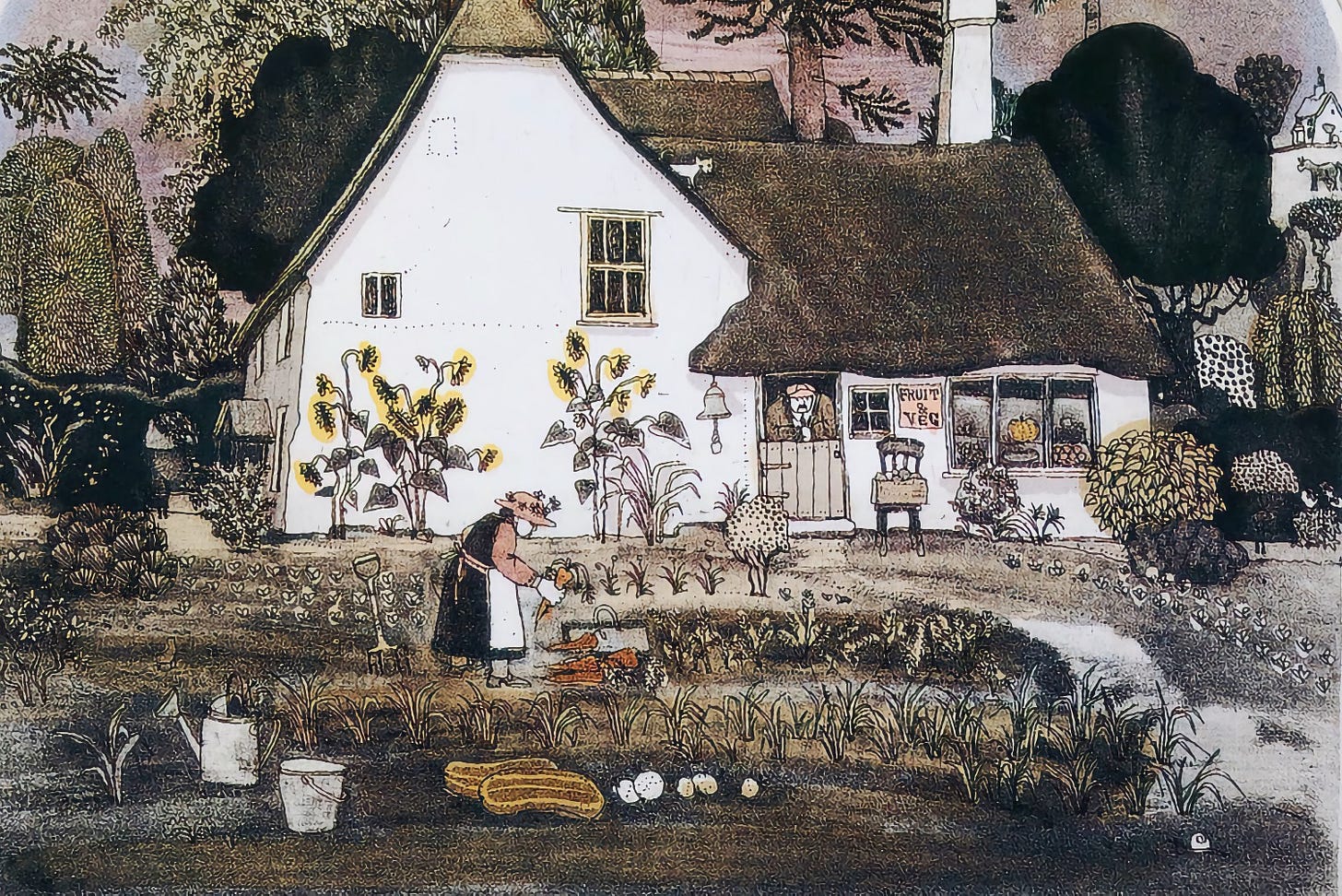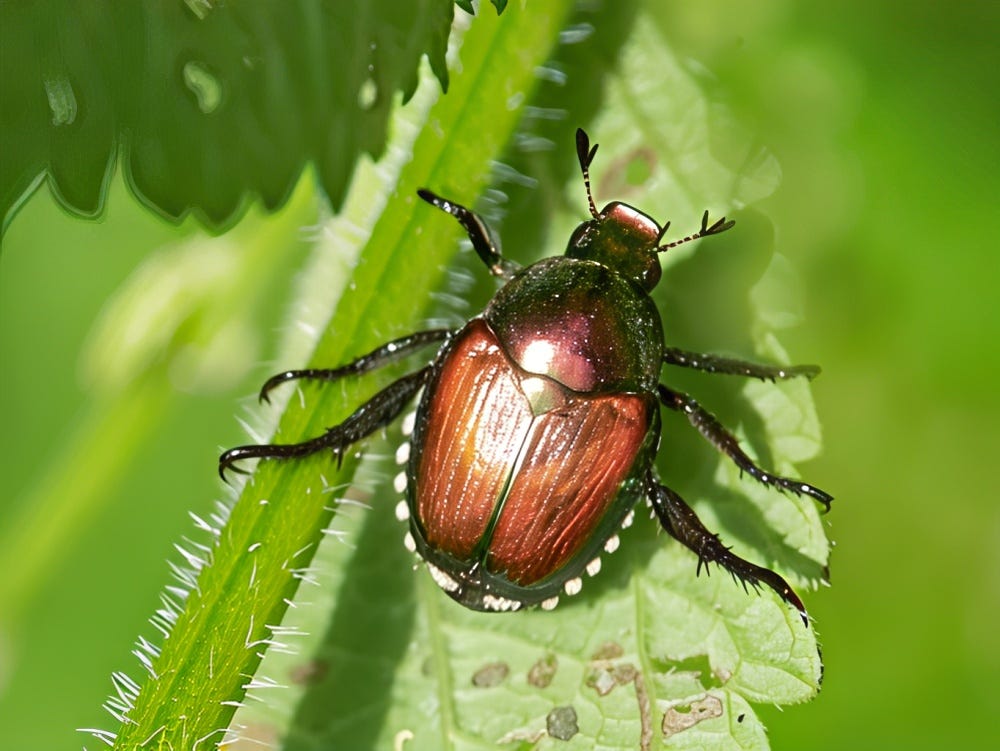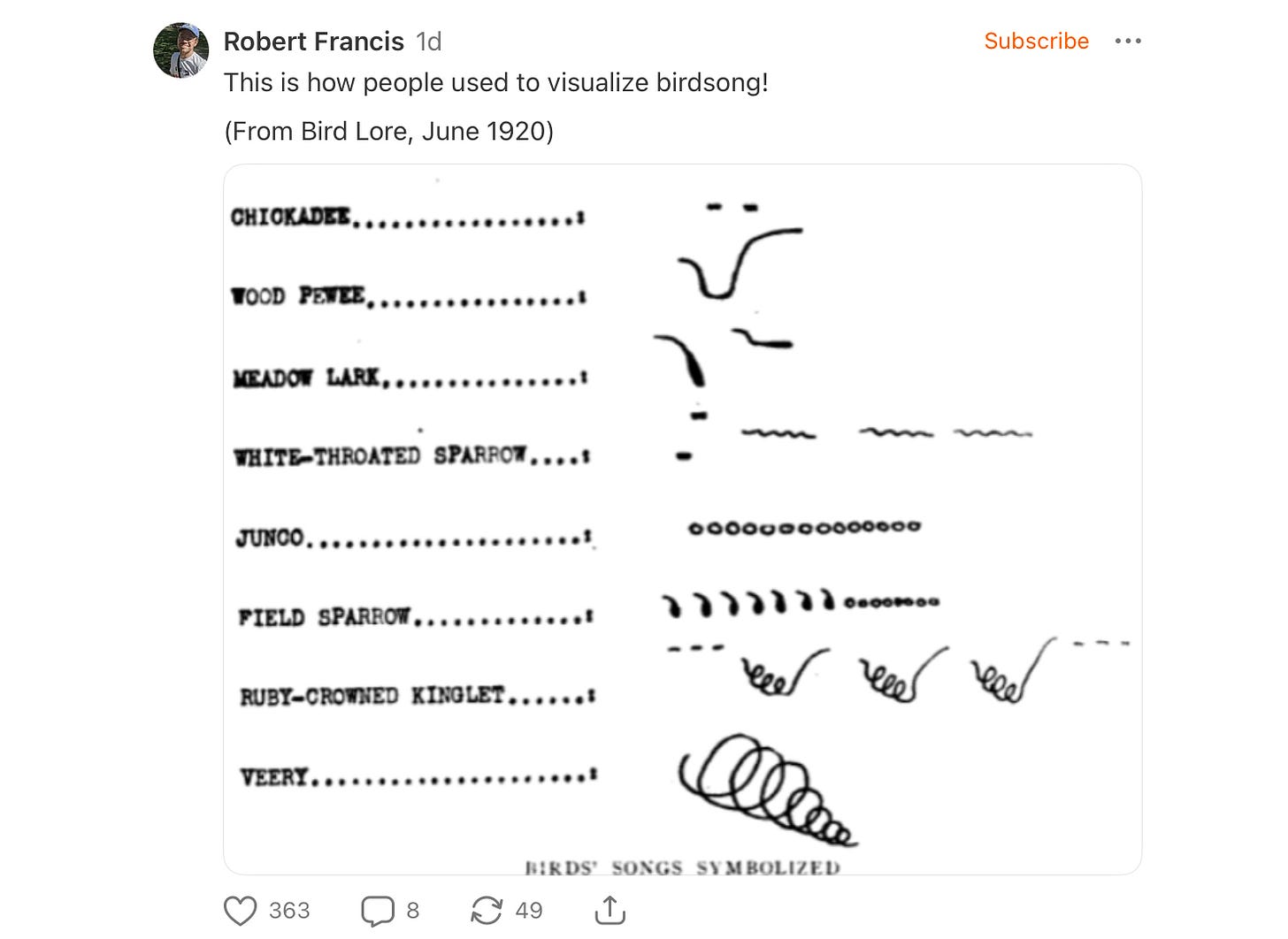Densification, Japanese Beetles, Recording Bird Songs, Keen Students, and Vikings.
6 June - Lots of things today
The Weekend Picture
Given all the publicity that vulnerable Monarch Butterflies receive (and quite rightly so) it is all too easy to think that milkweed are only of use to Monarchs. For a place to lay eggs and rear their larvae that is indubitably so - but milkweed flowers, which are everywhere this week, are also extremely impost as nectar suppliers to a wide range of other insects who rely on them for support even if they would never lay their eggs anywhere near. This splendidly smart insect is the Squash Vine Borer (Eichlinia cucurbitae) - not at all a popular creature if you happen to grow squash in your garden, but undeniably beautiful.
The purest description of the scientific method I ever saw was in a novel by Kurt Vonnegut. A workman discovers that if he puts a bucket full of nuts and bolts on one of the many supporting struts of the Tevatron supercollider, he can talk to the dead. He shares his finding with a scientist who, rather than scoffing as one might be inclined to do, says “show me”. That’s it. Not a method as such: more an attitude of mind.
https://diagrammonkey.wordpress.com/2025/07/03/how-to-science-a-science-with-science
One of the fantastic things about science is we – scientists – make it up as we go along with whatever we have at hand. It’s a magnificent never ending riff on the comical idea that we might actually know something. The punchlines come thick and fast. As with any improv, the engine is “yes, and”, to keep putting up new ideas as fast as reality can tear them down. Eventually some will stick.
Densification – I have a question
Housing is a problem in the modern world. Not enough of it, and generally too expensive for many … so towns are developing densification protocols. The social media has many posts in which people sing the praises of living hugger-mugger with their neighbours downtown because “it’s only five minutes walk to the coffee shop.” Understandable I suppose, but for me that would be very unpleasant. I want to take a step down a shallow rabbit hole byway to explain.
I am fortunate to live in a small suburb of a major city where we have no mains sewage system. Fortunate, I hear you say. How’s that? Fortunate in that as a wildlifer who manages a garden specifically for wildlife the fact that there is no sewage system here means that every house has a septic tank and a weeping field. Hence the gardens can never be subdivided because such a system requires a minimum outdoor area, a garden, in order to work. Best of all worlds. It means that we have space to welcome visiting birds, butterflies and bees, flowering plants for insects and provision of seeds and fruits for wildlife. The cost of installing piped sewage in the town is so prohibitive that densification is not on the horizon. We only have to travel short distances to other suburbs that have sewage systems to see the effects of gardens being subdivided and tower blocks of apartments erected. Shudder.
So my question is this. I know that most readers here like living alongside nature. They don't want their privacy invaded by neighbours peering from high level windows, and many of you enjoy getting your hands dirty working in gardens. I well understand that not everyone actually likes gardening and some live in apartments only because they have no option, while still having hopes to get a garden one day. What I am curious about is … what on earth do apartment-dwellers, especially those who are garden-less by choice, do when at home, other than stare at the walls or watch TV? What is it about living in a box surrounded by other box dwellers and separated from the natural world that they prefer? I could not do it. Something must appeal, but for the life of me I cannot fathom it. Any ideas?
Happy homes have gardens - even if not everyone knows it.
Hope springs eternal
We are at the start of the infamous Japanese Beetle season and in previous years have seen a rapid influx of the blighters about three weeks into June. This year the first skirmishers did not appear until Canada Day no less. Delayed this summer (332 killed to date against 1058 this day last year). But now they are here, let battle commence.
Fingers are firmly crossed that we can at least hope for a lesser invasion than some years. Their larvae live in the ground and feed on the roots of grasses for the most part … and we have zero lawn grass so apart from beetles hatching in neighbours’ plots and coming over the fence that may be a reason for the delayed influx to date. The other natural control we rely on is the Winsome fly. This is a Tachnid fly introduced to the continent a century ago because they parasitize JBs. We have been careful in previous years not to kill adult beetles that carry signs of winsome fly eggs adhering to the carapace. The fly larvae hatch and burrow into the beetle, basically killing it from the inside.
Being nerdy gardeners, we have for years collected and counted and then killed beetles each day and dutifully plotted the cumulative totals through the season … see the following graph. When I say ‘we,’ I mean that J does this, while I draw up the cumulative catch graphs for each year - like this, and yes, that chart does go up to 7000 beetles!
Bird Song
I am increasingly deaf and anyway have always had problems remembering the subtleties of bird song for identification purposes. I can learn the song of a specific species, but cannot often hold that tune in my head for more than a couple of days - my brain works visually and I cannot, as they used to say when I was young, carry a tune. So to identify a bird by sound I must rely on other ways to relate what is heard to identity. There are various visual ways to describe song to try to make them simpler to discuss and learn. By far the best for me are sonograms, visual, while the field guide “teakettle, teakettle” transliterations are next to useless. Recently I came across a rather artistic system published a century ago, and I find that I rather like it … it’s fun anyway and does make a bit of sense in that I can look at some of these squiggles and hear the bird singing in my head. Rather more so than the teakettle system, anyway. This was found in a magazine named “Bird Lore” published back in 1920. A historic curiosity, but interesting … especially that squiggle capturing the song of the Veery. If that’s a bird you are unfamiliar with, find the call on the internet, listen to it and look at the sketch. Uncannily useful.
Science and Stupidity Go Together
An article entitled “The importance of stupidity in scientific research,” published in the Journal of Cell Science in 2008, neatly explains the practical realities of scientific research and “the importance of stupidity”. Personally I would choose the word ignorance rather than stupidity, but the point is well made.
(Quote): I’d like to suggest that our Ph.D. programs often do students a disservice in two ways. First, I don't think students are made to understand how hard it is to do research. And how very, very hard it is to do important research. It's a lot harder than taking even very demanding courses. What makes it difficult is that research is immersion in the unknown. We just don't know what we're doing.
Later the author, Martin Schwartz, says:
Productive stupidity means being ignorant by choice … One of the beautiful things about science is that it allows us to bumble along, getting it wrong time after time, and feel fine as long as we learn something each time. No doubt, this can be difficult for students who are accustomed to getting the answers right. No doubt, reasonable levels of confidence and emotional resilience help, but I think scientific education might do more to ease what is a very big transition: from learning what other people once discovered (undergraduate) to making your own discoveries. The more comfortable we become with being stupid, the deeper we will wade into the unknown and the more likely we are to make big discoveries.
The Arbo - Copse
During 2017 a group of volunteers worked all summer in the arboretum to create a new trail to mark the 150th anniversary of Canada as a nation. As part of this venture we also installed a “copse” near the sugar shack that contains a variety of native shrubs and trees specially selected as species that will bear fruit for birds at various seasons of the year. Winterberry, Amelanchier, various species of Dogwood and others, all centered around an American Black Cherry tree. Things started growing, then Covid arrived and little maintenance was done for a few years, volunteers drifted away and grew fewer in number and in essence the copse was left to itself. At the beginning of this month I was asked by the arboretum to visit the copse with some summer students and provide a bit of history and offer some pointers they could use to clean the place out, remove invasive and unwanted plants and return the area to what we had originally envisaged.
I look forward to seeing how this project progresses and will report back here later in the year … but I especially want to put on record how delightful it was to meet the students, all McGill University biology and related fields students, who were keen and eager to start the work. At least some of the lates generation have the right idea about the important things in life.
Let’s Close at Sunset …
On this week, fourteen years ago, we were at the northern tip of Newfoundland visiting l’Anse-aux-Meadows where the first European (Norse) visitors to this continent settled and stayed for a while over 1000 years ago. It has been estimated by carbon dating that they were there around 1014 BCE. One evening we sat and watched the sun go down … a nice image to close this newsletter with.
Imagine a Norse longship sailing in these waters …
For the record, there is evidence of occupations by five indigenous groups at the site of L'Anse aux Meadows, the oldest dated to roughly 6,000 years ago. None were contemporaneous with the Norse occupation.















Sewer systems and septic systems ... it's all relative to location, as to which is best. Here at the southern end of the Olympic peninsula of Washington state I am on a septic system much like you Richard with lots of surrounding land. Though it is being logged off rather quickly. We have the septic system pumped from time to time and keep a record of that for the county and were we to want to sell the property. The water table is not too deep, it is good to be aware of that. Though as the logging takes away the forests that protect that underground water, who know how that source will change. And where does that pumped sewerage go??? I do not know. And was actually told, it is better not to ask!!! For another side of the story, not too far away is our beautiful Hood Canal. In recent decades it has gone from having a few state parks and camp sites to being heavily populated with 'summer homes' each on separate sewer systems that mostly dump into the canal. This, among other wrong doings (like contractors and dry cleaners dumping their waste, that they don't want to pay to have properly disposed of) .. this dumping of sewerage into Hood Canal has severely diminished to viable oxygen of those waters. As the shoreline around Hood Canal is divided among many rather poor counties which all want those property taxes, and the state being strapped for cash to fund land/water management, things are not looking good to get this situation put to rights. As Hood Canal has been the only place to find our native Olympia oysters, it is unthinkable that this is happening for the oysters and all else that lives in our native inland saltwater ways. To think of how we whites have been here destroying this once beautiful land for less than a few hundred years, has always made me sick at heart. Even as a child, I knew what humans are doing to the land and nature is so very, very wrong. But heck, I am only a stupid woman in an all knowing white man's world. What could I possibly know about anything.
Re. Densification - puzzles me too. We live in a town which is just about in the Greater Toronto Area but far enough north to be called The Country by locals. Roughly four acres, a large pond full of frogs, fish etc., less than an acre cleared. Septic bed, well water, no streetlights or sidewalks, but less than ten minutes by car from ‘civilization’. I know people who would HATE to live here, ‘it’s so dark’, ‘nothing to look at but trees’, ‘it’s so quiet’, ‘where IS everybody?’, and the birds and wildlife we love make them very nervous. To each his own, I guess. Now we’ve acquired a neighbour who has a similar property which he is doing his best to turn into a large version of a suburban home - manicured grass, paving everywhere, nothing blooming or blossoming (so untidy!). Boring, to us. And very critical of all our weeds, aka wilding.